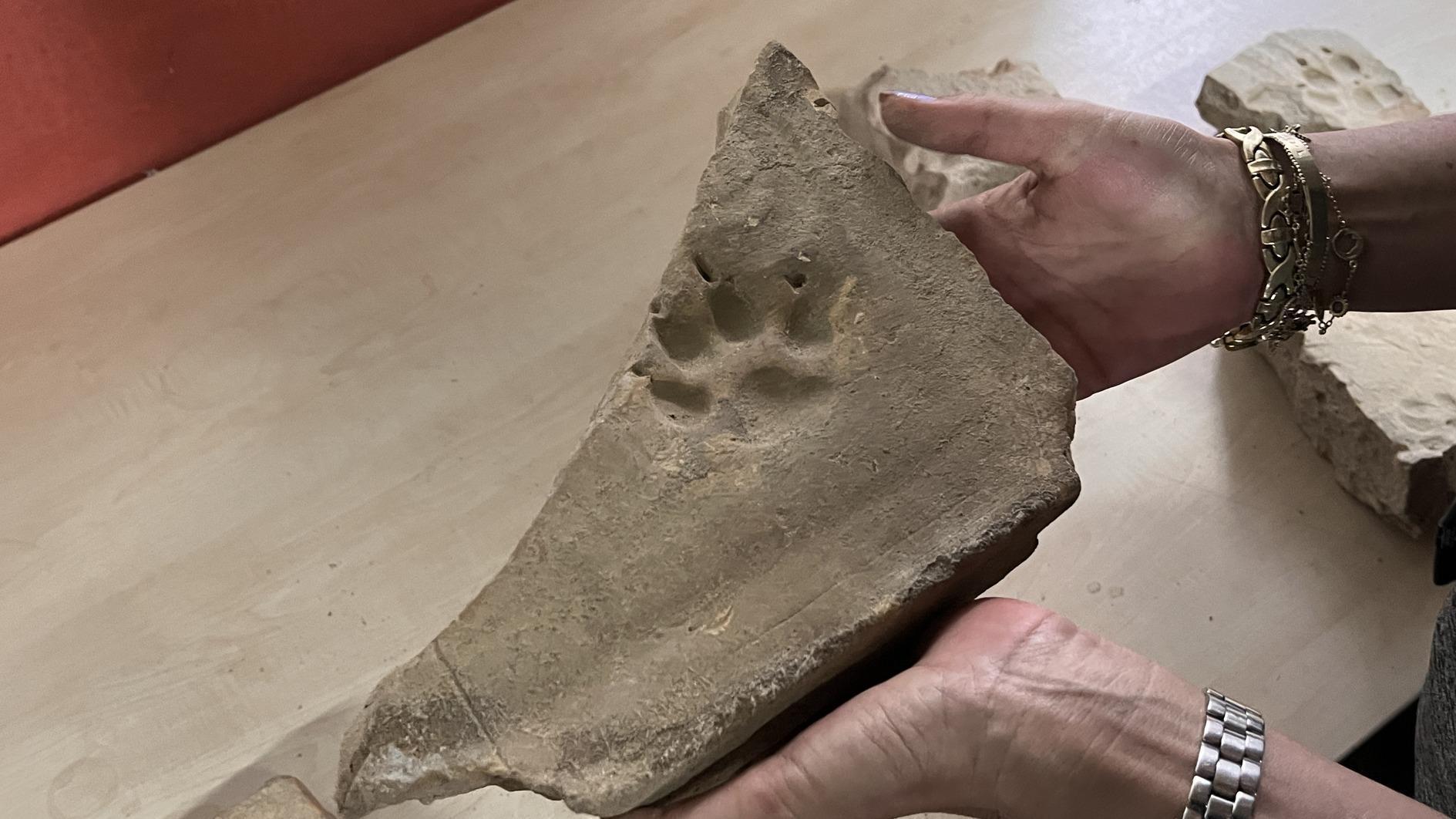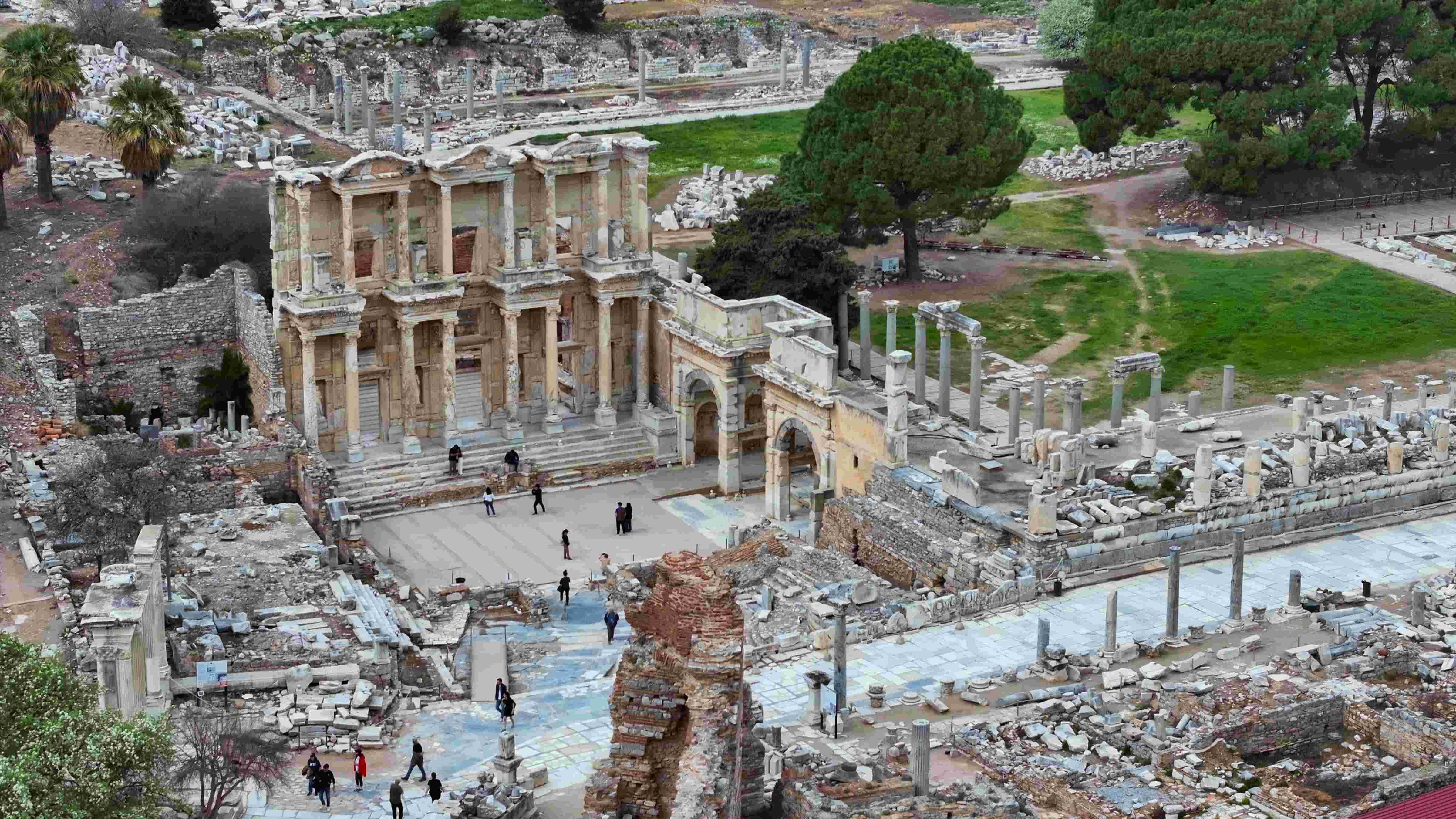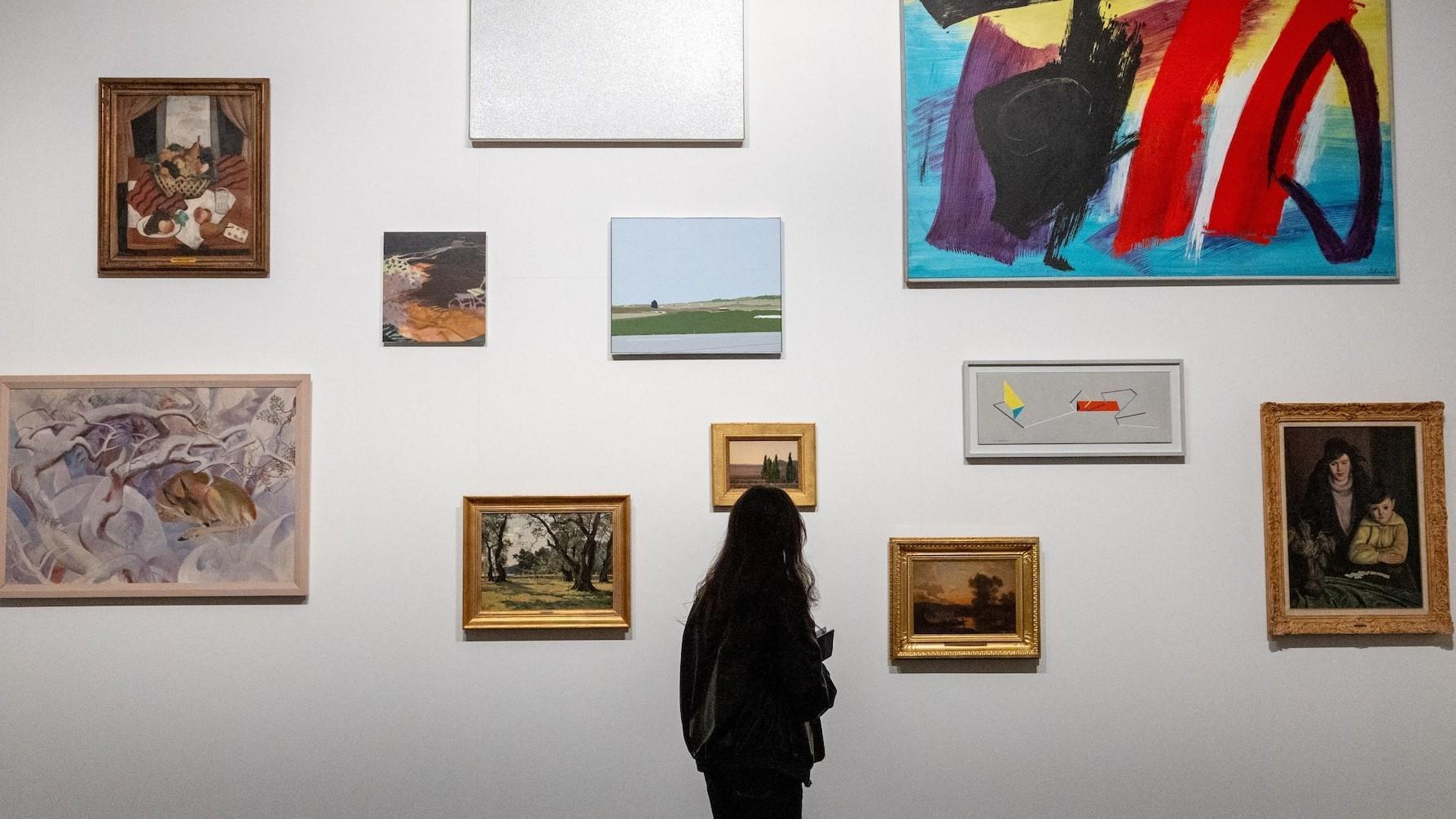Paw prints on ancient artifacts show love for nature, animals
MUĞLA

Paw prints have been discovered on some of the artifacts unearthed during excavations in the ancient city of Heraclea in Milas in the western province of Muğla.
The excavation work, which began four years ago in Kapıkırı neighborhood under the scientific supervision of Professor Zeliha Gider Büyüközer, continues throughout the year.
Heraclea, which has become a new destination for tourists with its preserved historical structures, also provides clues about life hundreds of years ago through its unearthed artifacts.
The excavations unearthed artifacts such as figurative mosaics, oil lamps, bricks with paw prints and tombs containing animal skeletons buried beside humans, which are considered indicators of the love for animals and nature among the people who lived in Heraclea 2,000 years ago.
Latmos and Heraclea excavation director Gider Büyüközer said that Heraclea and the surrounding Latmos region are extraordinary due to their 500-million-year geological history and natural landscape.
Noting that the people of Heraclea utilized nature efficiently without damaging it while building their structures, Büyüközer said, "Archaeological excavations show that the people of Heraclea lived intertwined with nature, regarded animals as an integral part of their lives and expressed this love through art and rituals. This ancient community incorporated naturally solid rocks into their buildings, creating durable and environmentally harmonious structures. The buildings in the ancient city are the clearest evidence of a life in harmony with nature."
Buried beside their dogs
Büyüközer recounted that during the 2022 excavations in Heraclea, a dog buried beside a human was found in a cemetery near the southern Hellenistic tower.
"This reflects the importance Heraclea’s inhabitants placed on their pets. The preference of individuals to be with their dogs in the afterlife highlights how valuable dogs were to them and the strength of the bond they shared. Furthermore, we found paw prints belonging to dogs on many clay bricks from the Roman bath during the excavations," she explained.
The approximately 2,000-year-old paw prints were created when the bricks were molded and laid out in the open to dry under the sun, during which domestic animals stepped on them, Büyüközer said. She added that these prints demonstrate the affection Heraclea’s people had for their animals and their close coexistence with them.
Büyüközer also noted that the mosaics unearthed in historical structures feature various animal figures. "The visual artifacts discovered during excavations reveal how well Heraclea’s inhabitants knew the animals around them and highlights their interest in them once again. Ceramics and oil lamps often decorated with botanical motifs and animal figures are another significant finding that demonstrates this community's love for nature and animals. The people of Heraclea not only saw nature and animals as part of their living space but also celebrated them through art," she said.
















